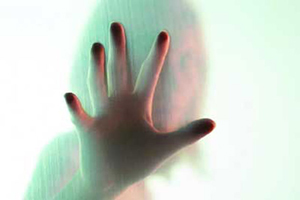 New Delhi, Mar 6: Delhi has been pegged as the most unsafe city in the country, for the second time in a row, by women travellers, a recent survey has found.
New Delhi, Mar 6: Delhi has been pegged as the most unsafe city in the country, for the second time in a row, by women travellers, a recent survey has found.
"Delhi retained its notorious reputation as the most unsafe city amongst the top 10 Indian cities polled with 95 per cent respondents expressing the opinion as opposed to 84 per cent in 2013" according to a survey by travel portal Trip Advisor.
Kolkata and Jaipur were ranked second and third most unsafe cities respectively with 64 per cent and 53 per cent votes each.
Ahmedabad toppled Mumbai to be rated the safest city by 85 per cent of respondents even as Maharashtra and Gujarat were voted to be the safest states with 16 and 14 per cent votes each. Mumbai (72 per cent) dropped to the 5th spot this year from the number 1 position in 2013.
The survey also noted that it was surprising to find that only 16 per cent women use the women safety applications that are available.
"Whether travelling alone or in a group of women, majority of respondents preferred travelling to a city as it offered a higher sense of security, law and order. Hill stations and beaches were second and third choice respectively," the annual women traveller survey 2014 by the travel portal said.
The findings which come ahead of the International Women's day are based on information collected from 1068 women and are aimed at at understanding travel sentiment and preferences of Indian women with respect to leisure travel while travelling solo or as part of an all-women group.
47 per cent of the respondents said they took leisure trips as part of a group of women compared to 35 per cent who travelled solo in the last two years.
"43 per cent of respondents were between the age of 18 and 35 years and 27 per cent of them fell into the category between 35 to 45 years," Nikhil Ganju, Country Manager, TripAdvisor said.
Ganju said there seemed to an rising trend of women who travelled solo or in womens only groups.
Out of 37 per cent respondents who have travelled solo, 56 per cent said they liked travelling alone and will continue to do so in the future.
A total of 53 per cent said they travel alone only to destinations (India or abroad) that are perceived as "safe."
"Solo women travellers preferred yoga and other spiritual retreats three times over to those travelling in a group who preferred to do activities like sightseeing and shopping," Ganju said.
For solo travellers other preferred activities include festivals of music or literature (29 per cent), health or wellness (24 per cent) as well as light adventure like camping and hiking (23 per cent).
For women travelling as a group preferred activities include Sightseeing-Eco tours or village tours (28 per cent), light adventure-camping, hiking (39 per cent), festivals of music or literature (20 per cent) and cruise or house boat (20 per cent).
The respondents included a mix of working professionals self employed women as well as homemakers.





Comments
Add new comment